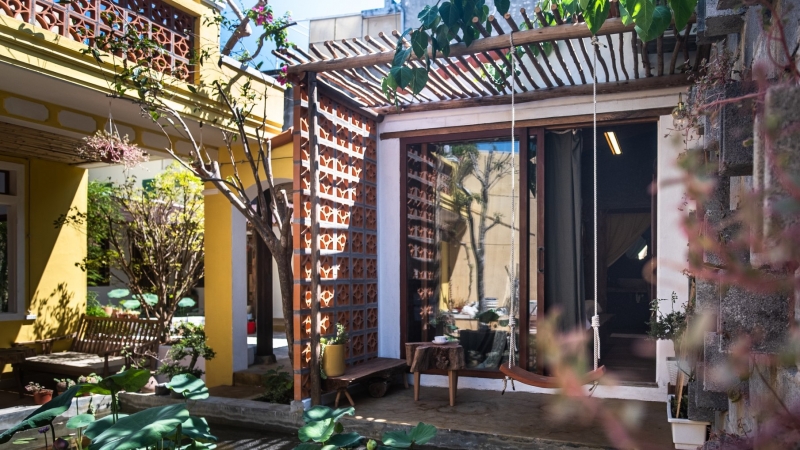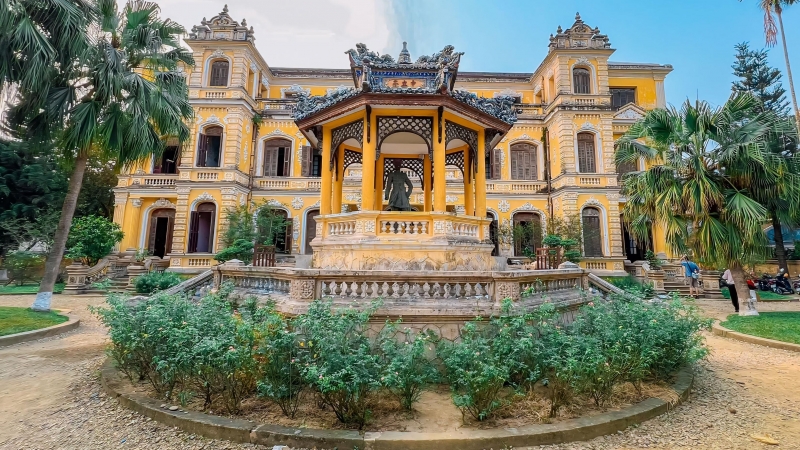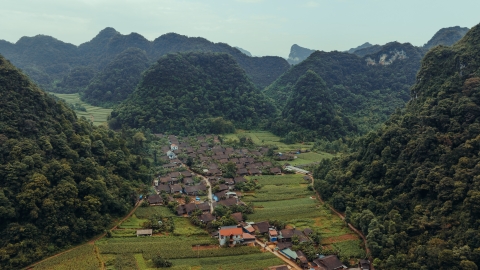Nowadays, although it no longer has the prosperity of the past, Bao Vinh ancient town still retains its ancient beauty, with the breath of time, and is an unmissable destination for those who want to explore the unique culture of Hue.
The quiet beauty of the former trading port
Bao Vinh was formed in the 17th century, when waterway trade flourished. Thanks to its favorable location, close to the Huong River, it quickly became a major commercial port, a place for the exchange of goods and culture between Vietnamese people and many countries in the region. According to ancient history, Bao Vinh was once brilliant with large ships, bustling commercial districts, and vibrant alleys.
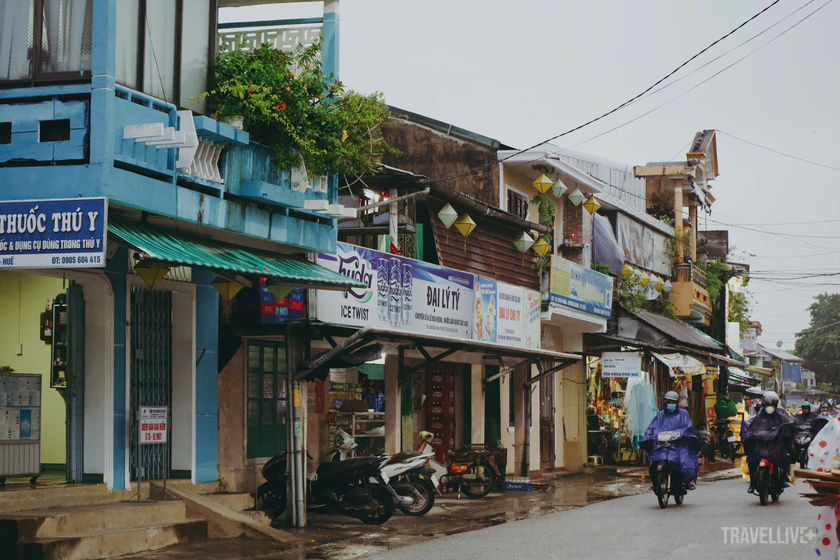
Thanks to its favorable location, this place quickly became a major commercial port, a place for the exchange of goods and culture between Vietnamese people and many countries in the region.
Walking on the narrow streets of Bao Vinh today, one feels as if stepping into a different space, where time seems to have stopped. The ancient wooden houses with elaborately carved wooden doors still retain their historical marks. However, many houses in the old town have been degraded by time and changes of modern life, only a few still retain their original shape.
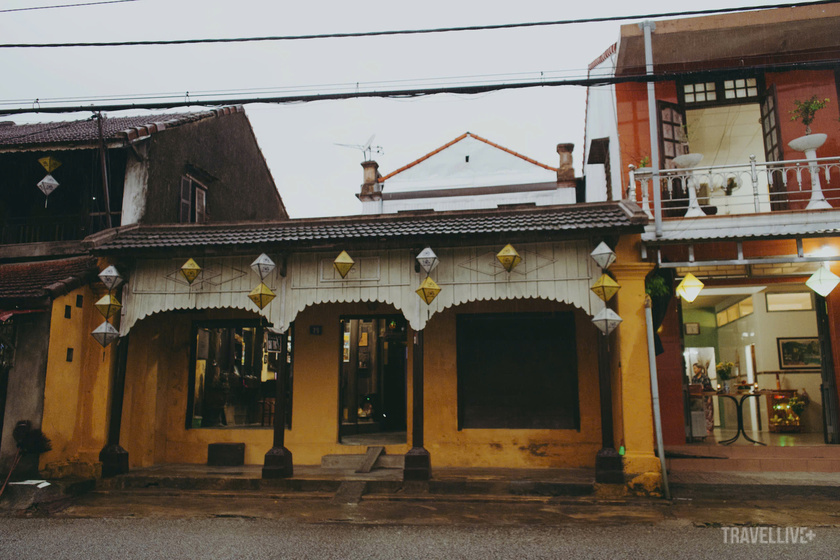
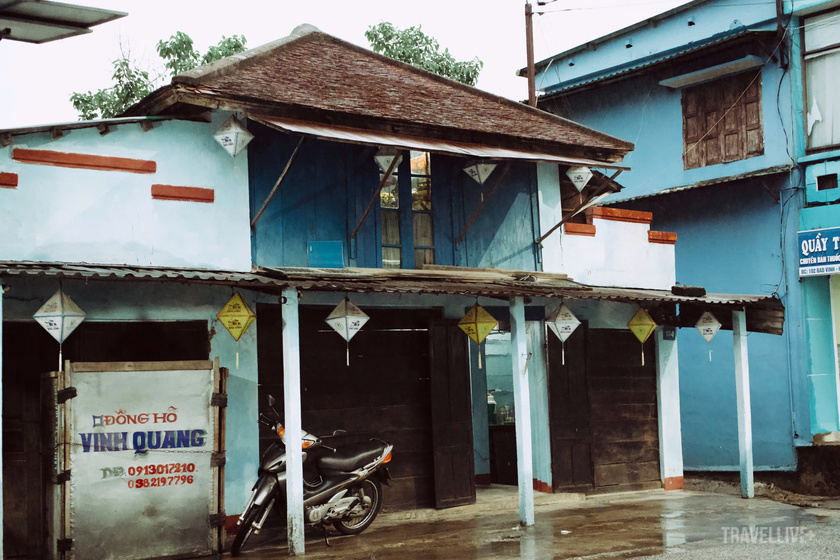

The houses here mostly have the traditional Hue house architecture.
The houses here mostly have the traditional architecture of Hue, with moss-covered yin-yang tiled roofs, sturdy ironwood pillars, but not tall or grand. It is this modesty and simplicity that creates a cozy, intimate space. The low roofs also seem to reflect the character of Bao Vinh people: simple, quiet and attached to their homeland. When walking through these houses, visitors cannot help but feel as if they have gone back in time, touching each layer of memory of a bygone era that is still preserved in each tile, each wooden door that has faded with time.


The low roofs also seem to reflect the character of Bao Vinh people: simple, quiet and attached to their homeland.
Hue's breath in daily life
Bao Vinh Market is one of the ancient markets that still exists from the prosperous period of the old town. Although small, the market is still bustling in the morning, with the bustling sounds of buyers and sellers in a cozy atmosphere. Ms. Nguyen Thi Lan (58 years old), who has been selling goods at Bao Vinh market for more than 30 years, recalls: “In the past, the old town was very crowded and cheerful, with houses close together and people trading busily. Now it is much quieter, but I still keep this small shop to continue the family tradition.”
For Ms. Lan, Bao Vinh market is not only a place to make a living but also a place to preserve memories of a prosperous time gone by. The market is still a place where local people gather and exchange goods, but now, it has taken on a new color, with tourists coming to visit and learn about local culture.

What is special about Bao Vinh is not only its ancient architecture but also its slow, quiet pace of life.
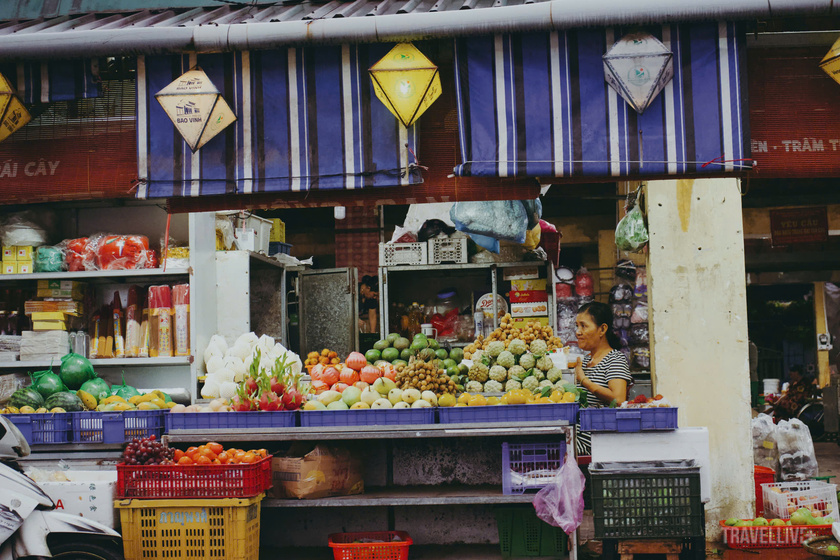
A market brings with it a peaceful, simple and very familiar beauty.
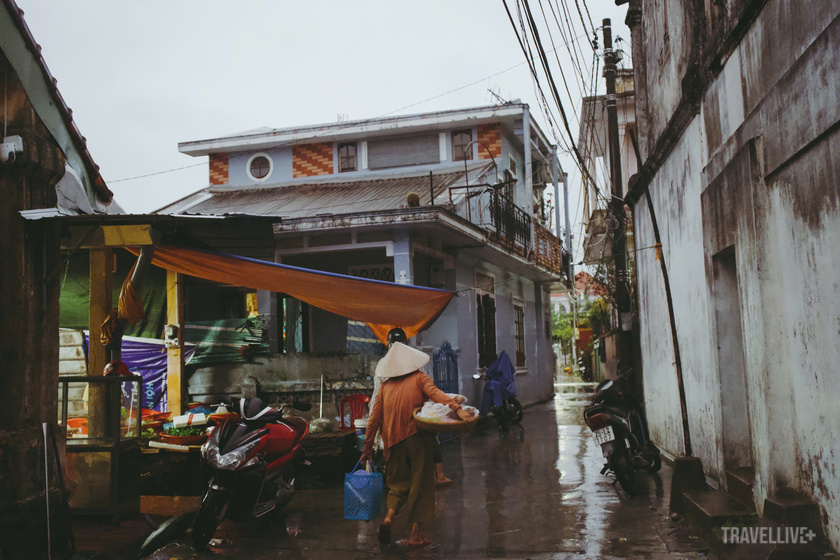
This market has few customers so there are very few goods here.
What is special about Bao Vinh is not only its ancient architecture but also its slow, quiet pace of life, far from the hustle and bustle of modern tourist cities. Early in the morning, on the river wharf, people still row boats, cast nets, and catch fish. Small roadside stalls still sell simple dishes such as Hue beef noodle soup, Nam Pho noodle soup, water fern cake, and nam cake, rich in the flavor of the capital. That scene seems to retain the entire image of a dreamy, peaceful, and poetic Hue.

Nam Pho noodle stall is deserted on a rainy afternoon
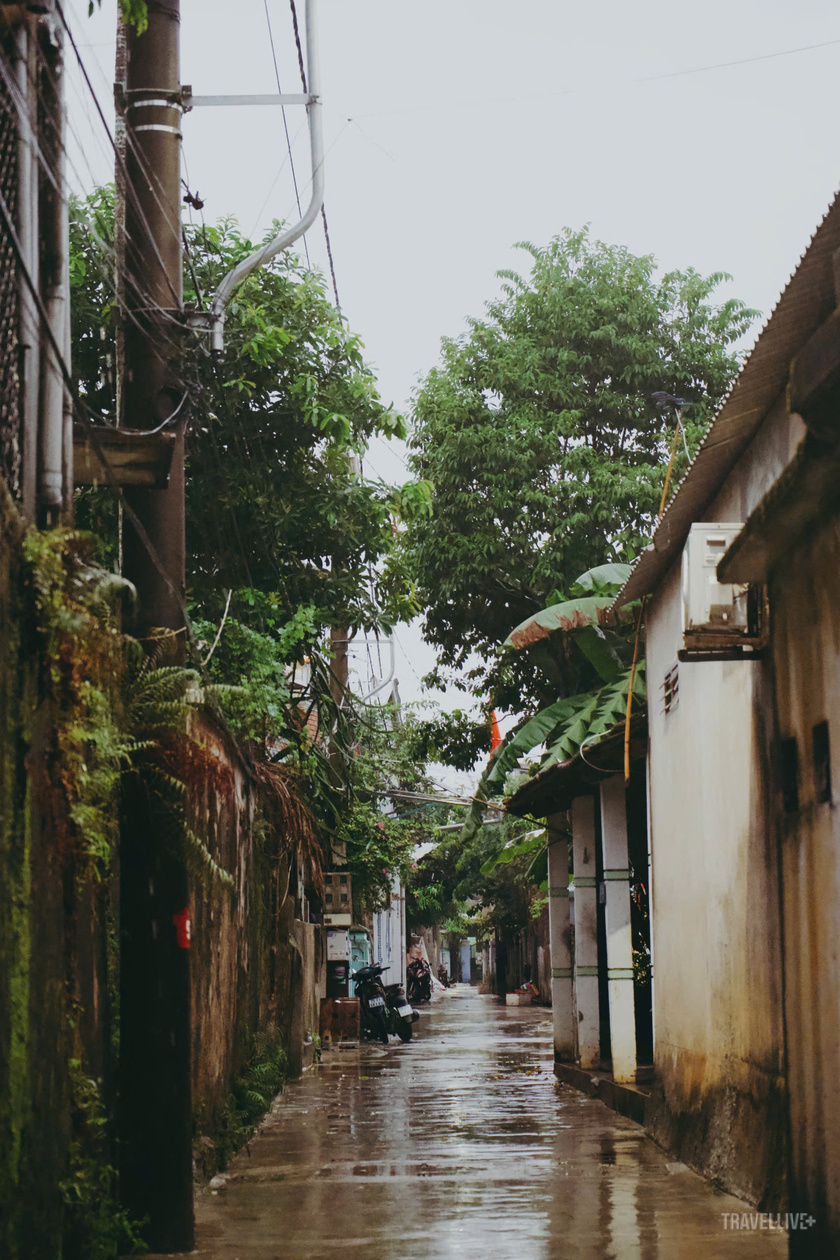
The small alley is stained with time
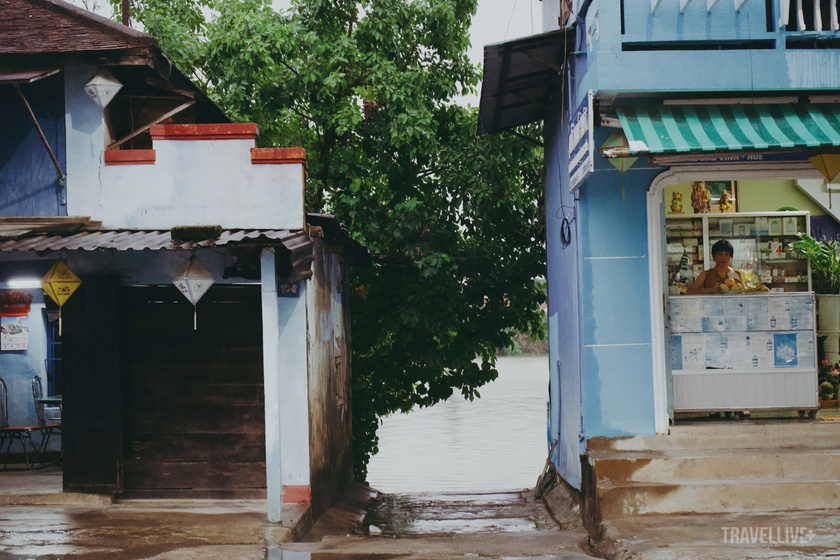
The houses are close together, the embankment was built during the French period, stretching along this stretch of road.
Many tourists also expressed similar feelings when experiencing the slow, simple pace of life in the old town. “The scenery here is not as splendid as other tourist destinations, but it is the rusticity and closeness that makes me feel attached. Boats on the Perfume River, small winding alleys, and enthusiastic people make Bao Vinh have its own charm,” said Tuan Minh, a tourist from Ho Chi Minh City.
Although Bao Vinh is no longer as bustling as before, the historical and cultural values here still resonate. The government and conservation agencies have been planning to restore and develop the old town to attract tourists, aiming to revive the once glorious Bao Vinh. Programs to preserve cultural heritage, restore traditional craft villages, and encourage local people to participate in tourism activities are some of the directions being considered to retain the unique features of this old town.
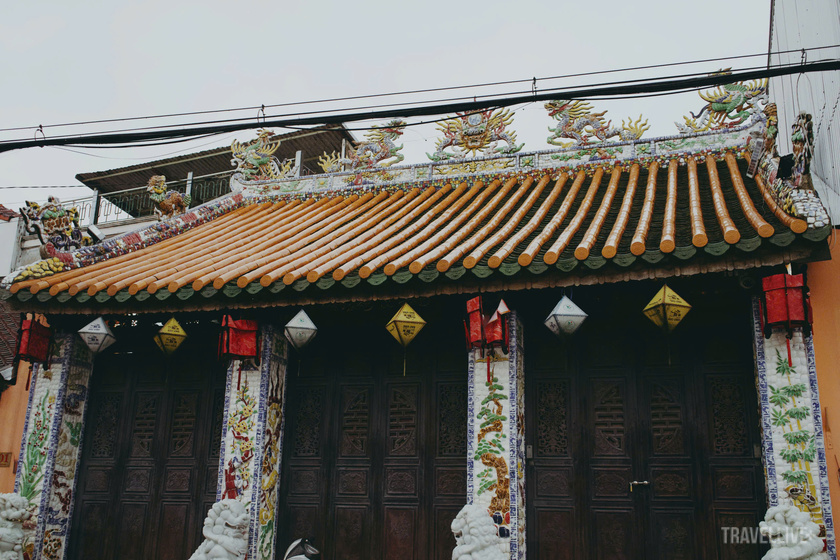
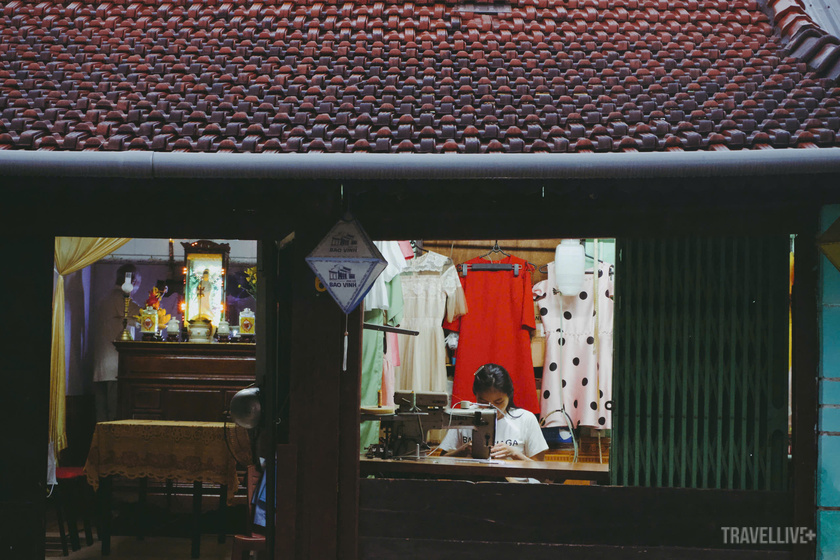
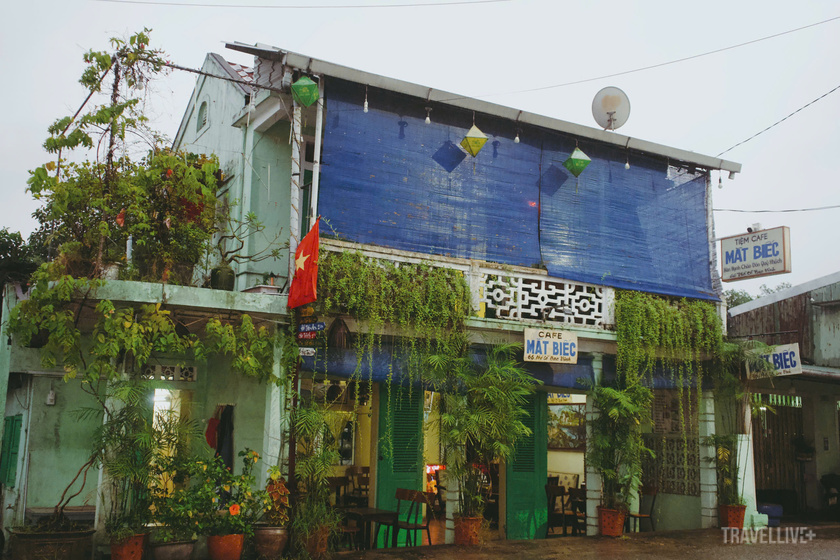
The famous coffee shop in the movie Blue Eyes
Bao Vinh is not only a tourist destination, but also an indispensable part of Hue's memory, a place that preserves the unique spiritual and cultural values of the ancient capital. Those who love Hue, when coming here, will feel the nostalgic beauty, the strange peace, along with the glorious historical marks of the past.






